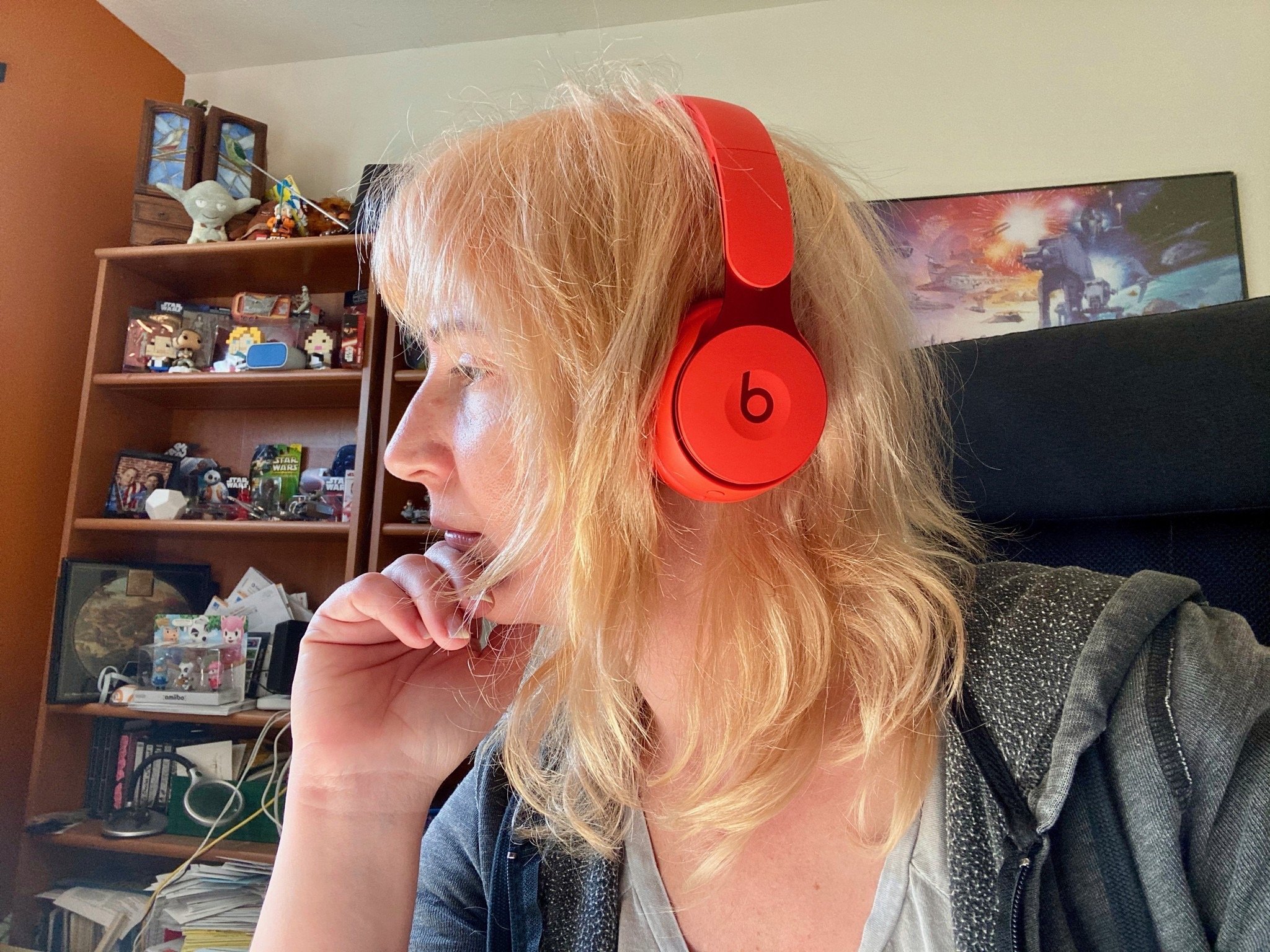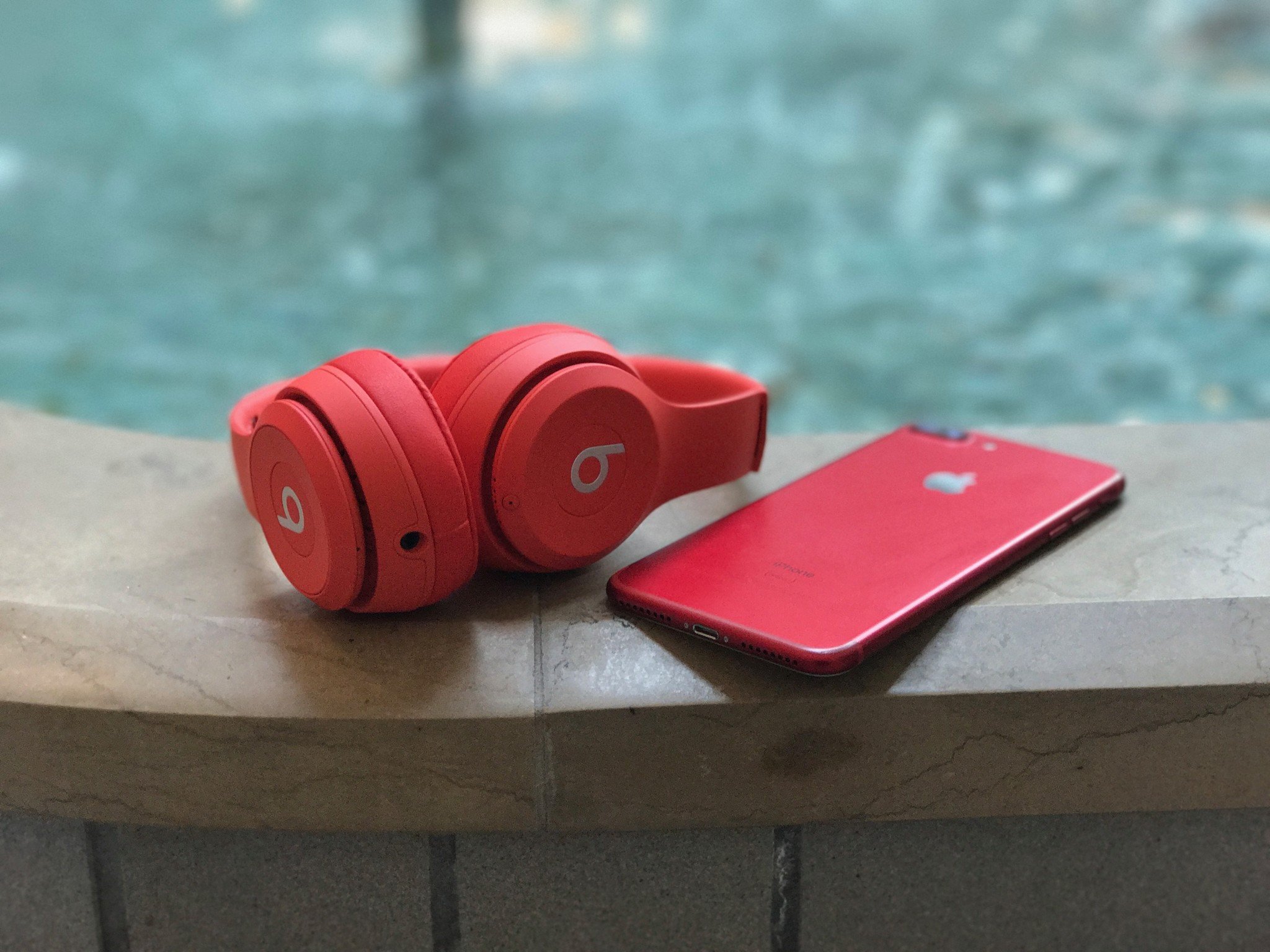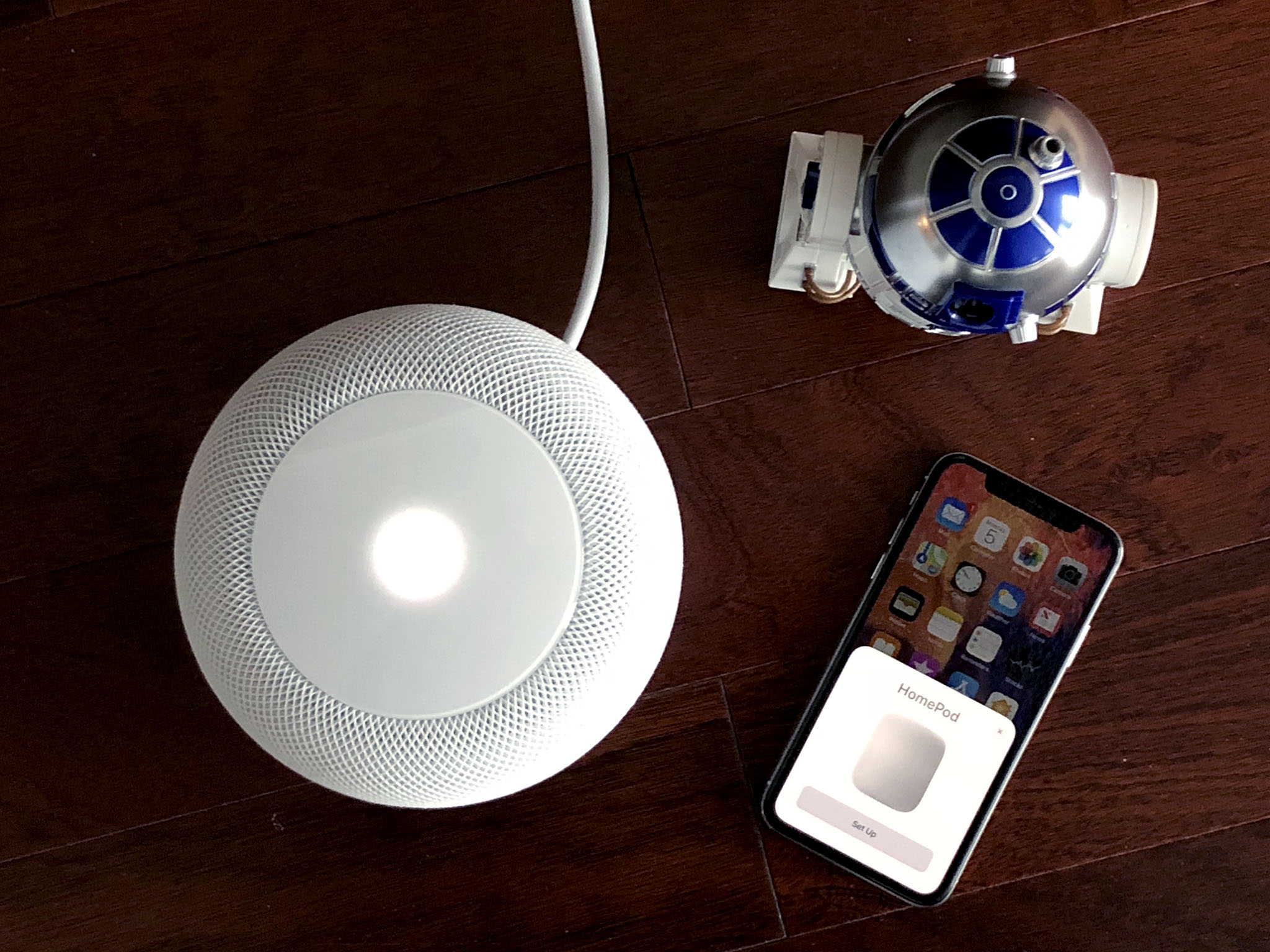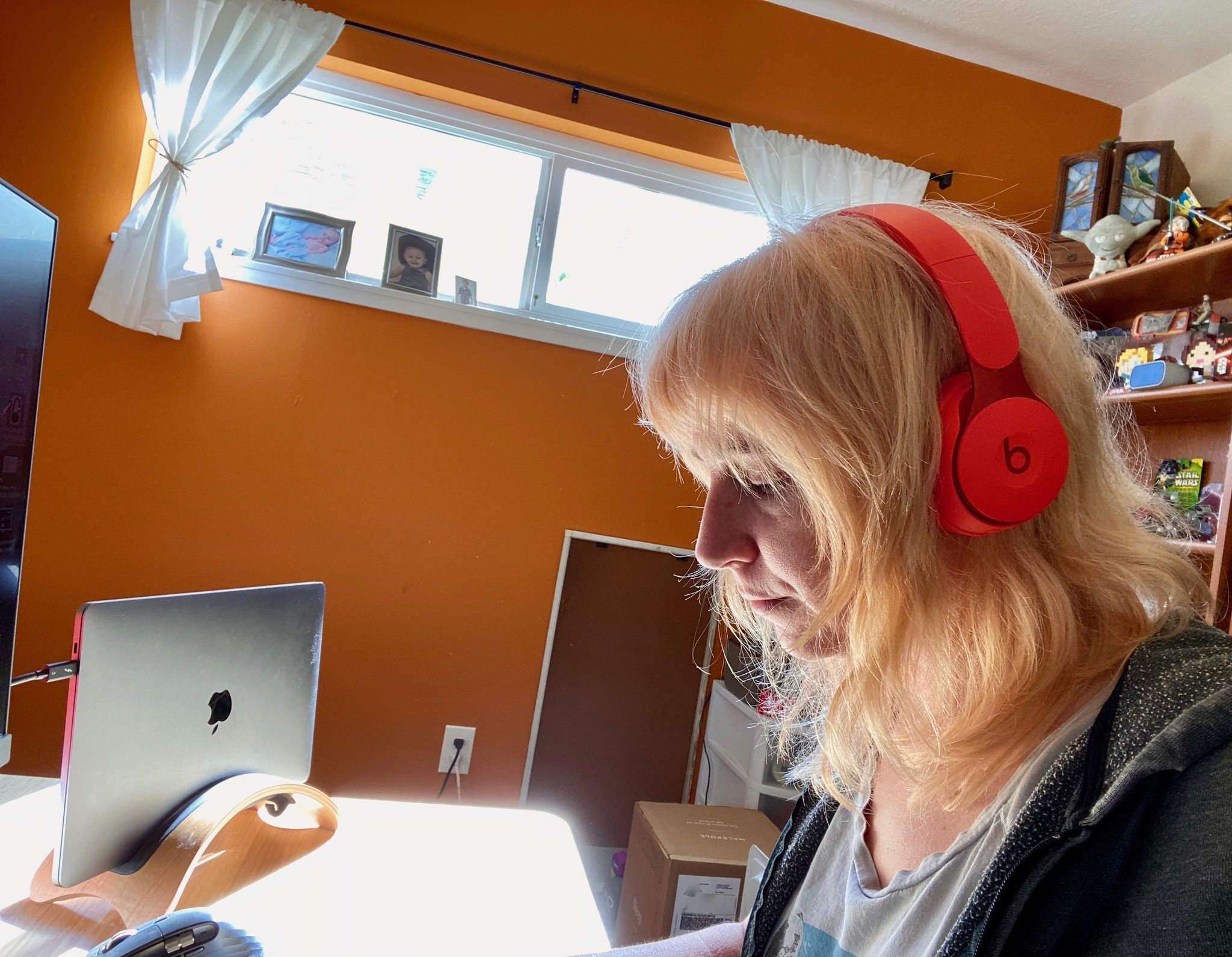Apple over-ear 'AirPods Studio' rumor analysis

In 2016 we got the truly wireless EarPods-like AirPods. In 2017… make that 2018… we got the room-filling HomePod. In 2019, second-generation AirPods and, right at the end of the year, the in-ear AirPods Pro.
Now, rumor has it, we may just be getting truly wireless over-the-ear headphones from Apple. StudioPods, so to speak.
So, what… and why?
Apple introduced AirPods at the September 2016 event, a salve for ripping the headphone jack clean off of the iPhone 7.
Rumors for an over-the-ear version first popped up about a year and a half later, in February of 2018, from — who else — supply chain exfiltrator extraordinaire, Kuo Ming-Chi.
Kuo, via MacRumors, said the company was making Apple-branded, high-end, over-the-ear headphones with an all-new design. As convenient as AirPods but with better sound quality, and would begin shipping at the end of 2018 at the earliest.
A month later, Mark Gurman and Debby Wu of Bloomberg followed up, repeating that Apple was working on high-end, noise-canceling, over-the-ear headphones that would rival Bose and Beats. Bloomberg also pegged them for an end-of-2018 launch, but added that development had been on-and-off over the past year and Apple had faced challenges that might push the release back.
Master your iPhone in minutes
iMore offers spot-on advice and guidance from our team of experts, with decades of Apple device experience to lean on. Learn more with iMore!
AirPods Studio Branding
Own-brand obviously means with an Apple logo on them, not a beats logo. Apple bought Beats back in 2014 and have kept Beats headphones not only alive since then, but thriving.
The very same day Phil Schiller, Apple's Senior Vice President of marketing, announced the AirPods and the custom W1 wireless silicon, he also announced all-new Beats X, PowerBeats, and Beats Pro with the exact same chip.
Last year, Apple not only released 2nd generation AirPods with new H1 headphone silicon, but new PowerBeats Pro and Solo Pro, again with the exact same chip.
Now, Beats also has an over-the-ear headphone line — Beats Studio. But there are no Beats Studio Pros yet, and none with that H1 chipset. Maybe there will be, maybe there won't be. Regardless, with the way Apple is slowly eating its way up the headphone chain, Apple-branded StudioPods just make the kind of sense that does.
AirPods are a phenomena. Despite the usual short-sighted tech-sperts making fun of them at launch and well beyond, they've not only become a meme, they've become a multi-billion dollar business.
AirPods Pro began expanding that market — adding features like water resistance and active noise cancelation, at a higher price-point, and Apple still can't keep up with demand.
Going from in-ear to over-the-ear is just the next logical step up.
AirPods Studio Design

All-new design's gotta mean Apple industrial design rather than Beats. Which will be great for people who find Beats a little loud and ostentatious and prefer the more minimalist Apple aesthetic.
Maybe not so great though for people who prefer crunchy manual controls, like physical volume buttons, play-pause, and skip forward or back.
AirPods can take a virtual tap. AirPods Pro a virtual squeeze. It's part concession to the truly tiny size. Part Apple gonna Apple.
Over-the-ear StudioPods would be much, much bigger. They're not commonly called cans due to their size, but you'd be forgiven for thinking that's exactly the reason.
Hopefully, Apple can find some design-is-how-it-works middle ground here.
AirPods Studio Integration

Convenience will no doubt come in the form of the existing pairing and control interface that works with the H1 chip to make set up a glass of ice-water in Bluetooth hell.
So, StudioPods or StudioPods Pro, or whatever Apple calls them, should work the same way as AirPods Pro.
Bring them close. Tap to connect. Bam. You're connected. Then you can use a combination of on-device, Siri, in control center, and in settings toggles to set things up just the way you like them.
Since these would be positioned at the highest end, maybe Apple could even do something fancy with EQ or sound profiles, so you can change them depending on your personal preferences in general or just what you're listening to. From Siri, reference mode to Siri, boom that bass.
AirPods Studio Timeline
As to shipping late 2018 at the earliest, well, clearly we've already blown way past that.
Audio devices, in general, have proven tricky and time consuming for Apple to ship. The original AirPods were delayed months. HomePod into the next year. Rumors pegged both the 2nd generation AirPods and AirPods Pro for earlier releases as well.
Apple's in no dire need to ship StudioPods, though, so it's one of those things where getting it right is far more important than getting it right now.
Which brings us to the other thing Apple's struggled with — audio quality.
AirPods Studio Sound

Now, I'm the kind of monster who's fine listening audio podcasts on a speakerphone. Not even a modern one either. Like back in the Tree and original iPhone days. Yeah, total animal.
So, I completely understand how subjective and personal audio quality can be, and how much emperors' new headphones really exists in what golden ears claim they can hear as price tags soar into the tens and hundreds of thousands of dollars for reference sets that make you want to scream in space.
But Apple — the iPod company — hasn't had a reputation for good, actually for kinda bad audio. It's white wired earbuds became iconic, and Apple spent a ton of time and resources designing the one-size-fits-most-if-not-all EarPods.
But the sound was still meh, at best, as were the speakers on pretty much every iPhone, iPad, and Mac.
Then, Apple bought Beats, and rather than just integrate that company's existing sound tech, Apple decided to think different.
Eventually, a team of experts, some of the best in the business, were put together and Apple began construction on a massive new audio lab near what would become Apple Park.
We started seeing the teams work on things like the iPad Pro speakers, which would stay in their proper channels regardless of how you rotated them. The iPhone earpiece, which would try and beam audio towards your ear regardless of exactly where you were holding it against your head.
Then came AirPods, and people complained they were paying a lot for audio that was still midling at best. Now, of course, what we were paying for was the W1, now H1 chip, all the sensors, and the expense of crushing everything down to fit into that tiny bud.
But still, the audio.
Then came HomePod, with computational audio that let you drop it almost anywhere in a room and instantly get great audio no matter where you dropped it or where you moved relative to it.
That was Apple's coming out party for its new audio tech and the first time it invited anyone, yours truly included, into that giant sound lab.
Set by science, sweetened by humans, it was the first in a new line of speaker technology from Apple that's now brought us spatial audio, Dolby ATOMS speakers on iPhones and even the 16-inch MacBook Pro, and Beats and even AirPods Pro with better sound than ever.
AirPods Pro, though, while better than AirPods, and filled with even more impressive, and more expensive tech like 10 cores of audio silicon, still didn't win universal praise for the way they sound.
So, the biggest question for me, is with the much bigger sound space of over-the-ear to work with, will the StudioPods transcend the AirPods and provide a much more HomePod style experience? Will it impress the way the MacBook Pro speakers have? Will it win over the audiophiles?
We'll have to wait and... not just see but hear.

Rene Ritchie is one of the most respected Apple analysts in the business, reaching a combined audience of over 40 million readers a month. His YouTube channel, Vector, has over 90 thousand subscribers and 14 million views and his podcasts, including Debug, have been downloaded over 20 million times. He also regularly co-hosts MacBreak Weekly for the TWiT network and co-hosted CES Live! and Talk Mobile. Based in Montreal, Rene is a former director of product marketing, web developer, and graphic designer. He's authored several books and appeared on numerous television and radio segments to discuss Apple and the technology industry. When not working, he likes to cook, grapple, and spend time with his friends and family.
